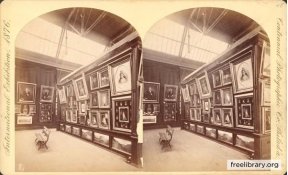jon koss
Member
Hopefully some APUGers can share their insights here. The image in the photo attached is absolutely huge. Frame dimensions are 30 x 48 inches with an image size of 22 x 40 inches. It is quite old. Judging by the frame, it dates from around the turn of the 20th century. I have never been able to determine what the dang thing is. At first blush it looks like a mammoth albumen photograph, but at this size and aspect ratio I wonder if that is possible. Could it be an example of some sort of photomechanical mass-production process from that era? A few times I have convinced myself that it is a drawing or engraving, but there is so much detail everywhere that it would have taken years to draw it all in. And then there is the lone figure standing in the foreground. Possibly the photographer? Hard to imagine otherwise!
In any case, I was hoping someone would look at this and say, "Oh that's a typical XXX. They were popular from 18xx to 19xx." I have never had the nerve to open it up and look at the back of the image, so I can't help there. Yes, that banding is real. There are some vertical braces on the back that must be protecting the image. All the rest looks like it has a bit of acid decay.
Thanks in advance for any help.
Jon
In any case, I was hoping someone would look at this and say, "Oh that's a typical XXX. They were popular from 18xx to 19xx." I have never had the nerve to open it up and look at the back of the image, so I can't help there. Yes, that banding is real. There are some vertical braces on the back that must be protecting the image. All the rest looks like it has a bit of acid decay.
Thanks in advance for any help.
Jon
Attachments
Last edited by a moderator:







